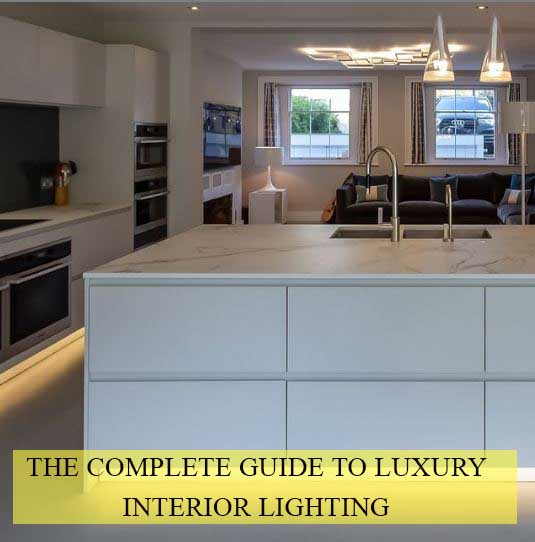THE COMPLETE GUIDE TO LUXURY INTERIOR LIGHTING
No matter how exquisitely set up your living space is, lighting remains one of the most significant aspects of your interior. Lighting holds within its grasp, the power to actually determine the ambiance of a room and also cleverly alter the perceived size of a space.
The right lighting for your space will work in tandem with various areas of interior design, like furniture selection, color scheme and room layout. Lighting can even impact the day-to-day of the inhabitants of the space it illuminates, as under or over illuminating can result in eye fatigue and headaches.
This luxury guide to lighting will expertly combine the various facets of lighting to assist you illuminate your space according to function as well as style.
TYPES OF LIGHTING
There are various kinds of interior lighting, like general, ambient, task and accent.
Some lights can match some of these types, however a basic understanding of each and every type can greatly assist you in coming up with an effective lighting scheme.
General Lighting
Based on functionality instead of visual appeal, general lighting sets the groundwork for your lighting scheme. It provides an even glow across the whole space and thus bestows a sense of consistency to it.
A central pendant light like our Vera Hanging Light is seen as one of the most common source of general lighting. Luxury chandeliers are another central source that serve as terrific style statements and add a bit of class to your space.
However, a lighting scheme consisting of just a central light source is usually considered as vastly insufficient or perhaps detrimental to the overall design of the room and might create unflattering shadows.
Ambient Lighting
Ambient lighting is usually used interchangeably with general lighting. However while general lighting provides practicality, ambient lighting exudes drama as well as flair. It will often be paired to a dimming system that helps tweak the light level in accordance with the occasion. As compared to its counterpart, it’s a lot softer and indirect, doing away with the issue of unappealing shadows.
Task Lighting
Task lighting helps you perform particular tasks like reading, preparing food, etc. Task lighting has to be incorporated into various areas, like mirror lights for personalised grooming areas and bathrooms, reading lights attached near headboards, etc. This lighting is offered for kitchens by several sources like pendant lighting, recessed downlights over worktops and under-cabinet lighting.
Task lighting like our Frosted Dome Gold/Copper Plated Wall/Ceiling Light is now seen as a necessary addition to residential and commercial spaces because it provides comfort and ease and even subtly enhances the overall design of the space.
Accent Lighting
Combined with the above aspects, accent lighting helps drive up the visual appeal of an area even further. It is any lighting used to highlight a particular feature in a room.
Spotlights are often used to draw the attention to particular paintings, sculptures and any other prized possessions you intend to exhibit. To do its work effectively, accent lighting requires a minimum of 3 times as much light than the general light surrounding it and hence pulls a much higher wattage.
LIGHTING EFFECTS
Following are some of the lighting effect:
Down-lighting:
Perhaps one of the most popular sort of lighting for interiors, down-lighting is an incredibly useful and accessible option. Spotlights or central light sources are usually down-lights. However, it does cause unflattering shadows, and hence it must be balanced by the help of ambient lighting.
Up-lighting:
Up-lighting by nature is actually a much more understated alternative to down-lighting. Moreover, it is indirect in its approach, because it presents light by making it bounce off the ceiling and then reflect into your space.
Wall Washing:
Wall washing actually provides a uniform glow on a vertical surface. It is essential to place the light at an appropriate distance in order to allow it to softly illuminate the whole surface. Furthermore, considering the sequential relationship between the rooms of your space is important – a sharp contrast in lighting when entering a new space can cause disorientation and weariness of the eyes.
Bearing in mind the above elements will get you well on your way to planning an effective lighting scheme suited to the requirements of your space and transform the look of it for the better.


